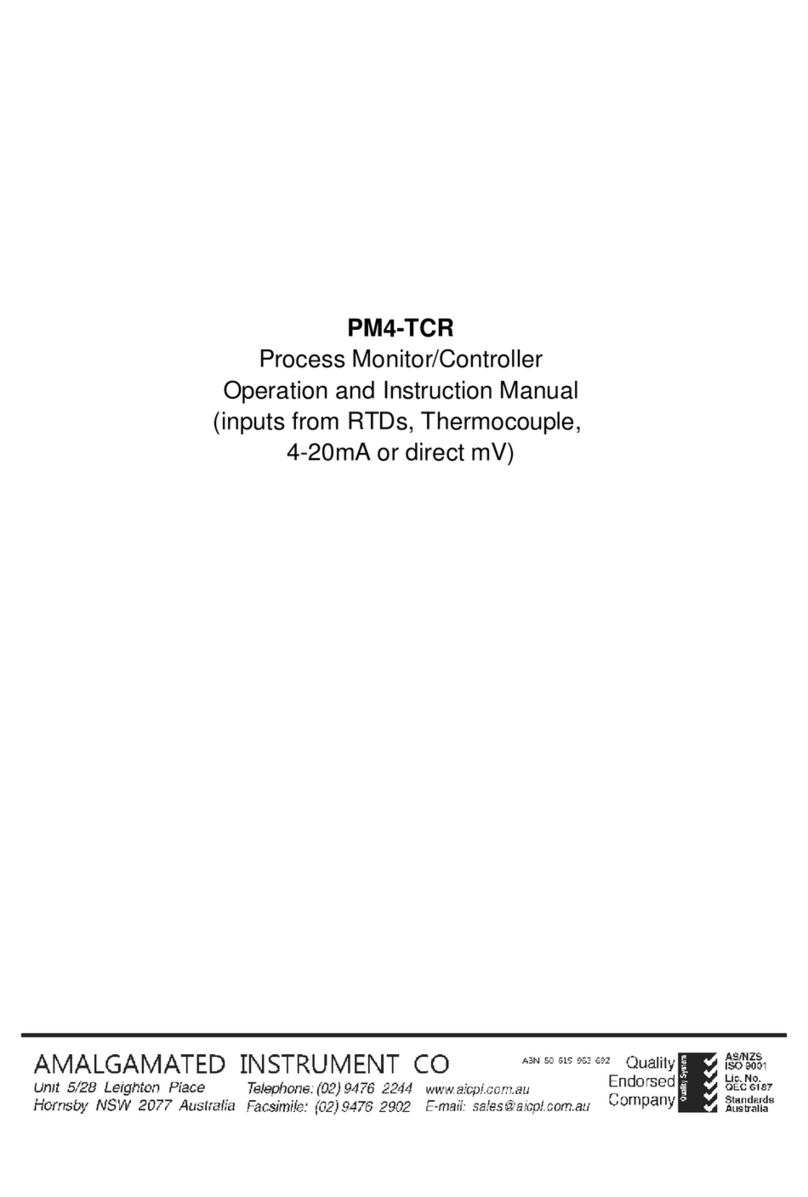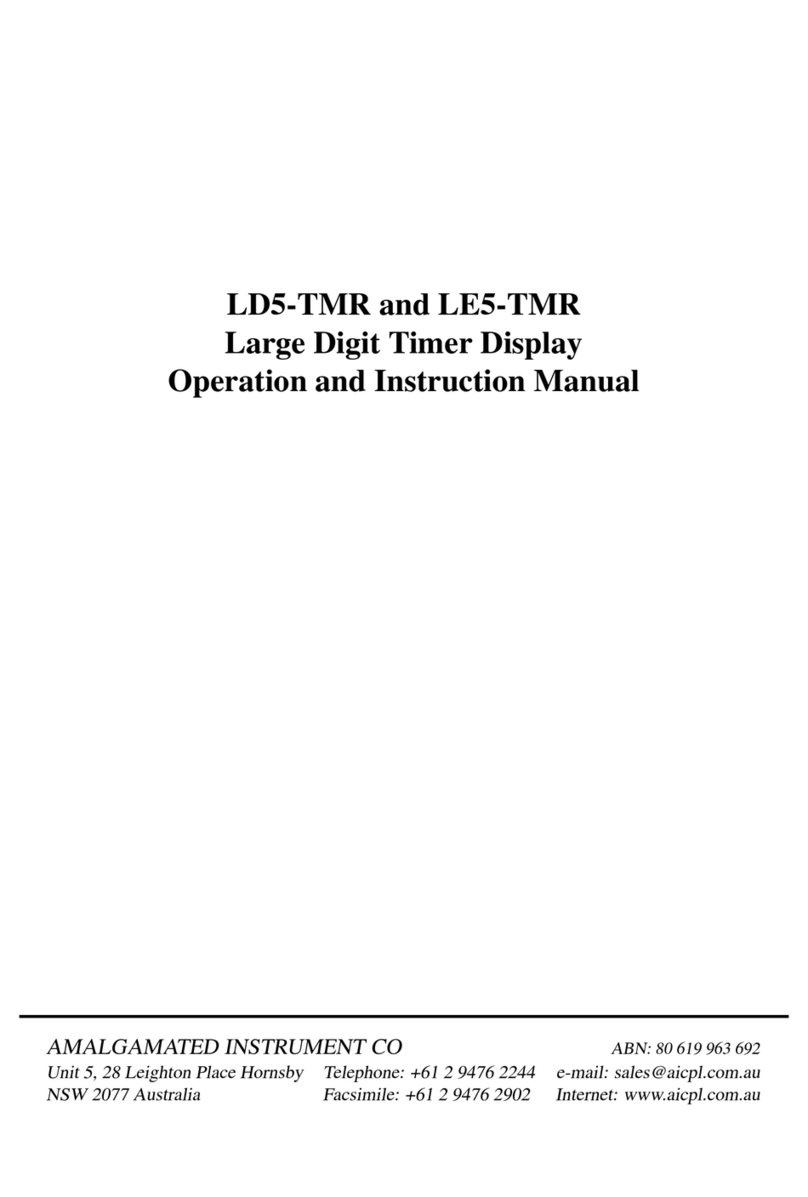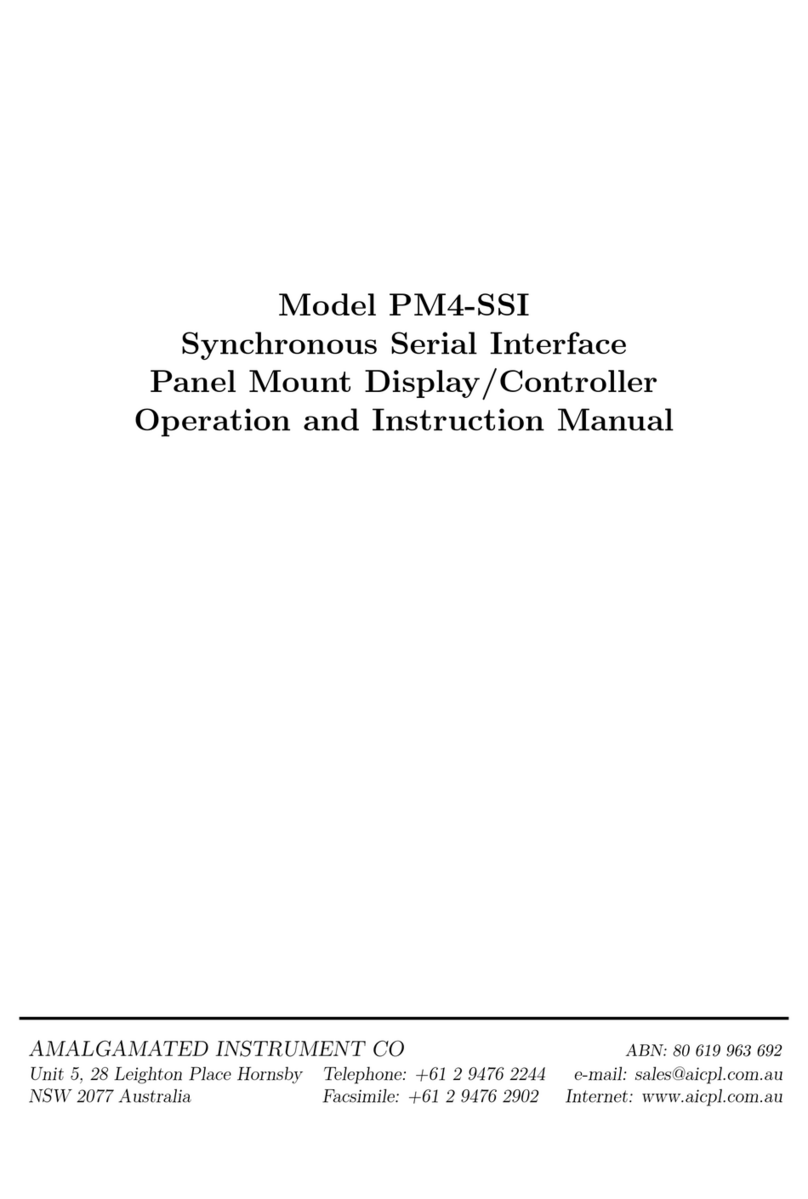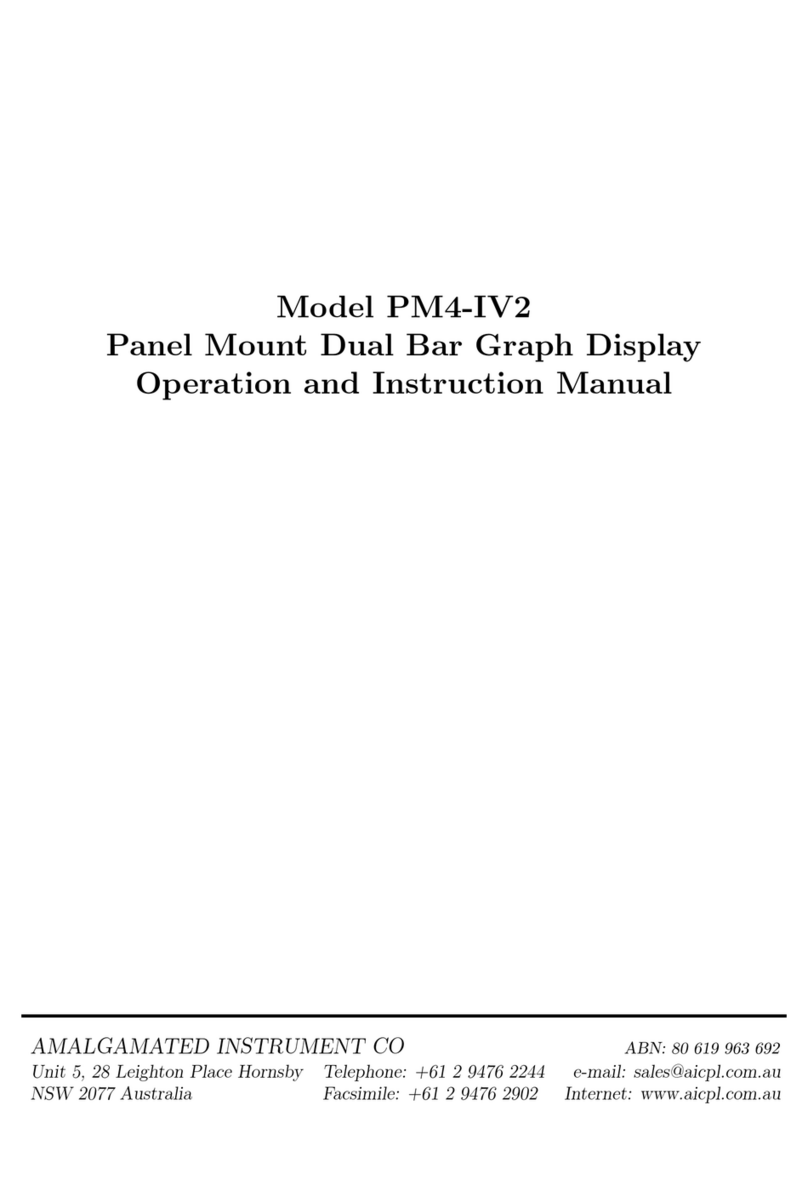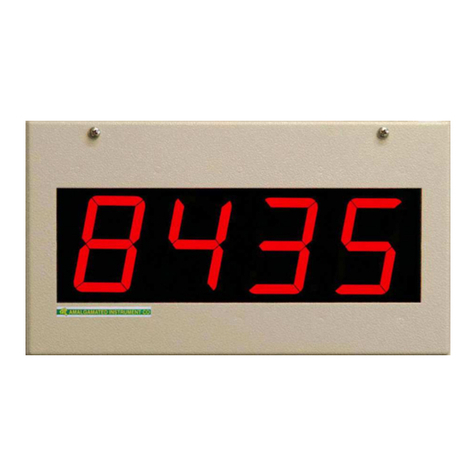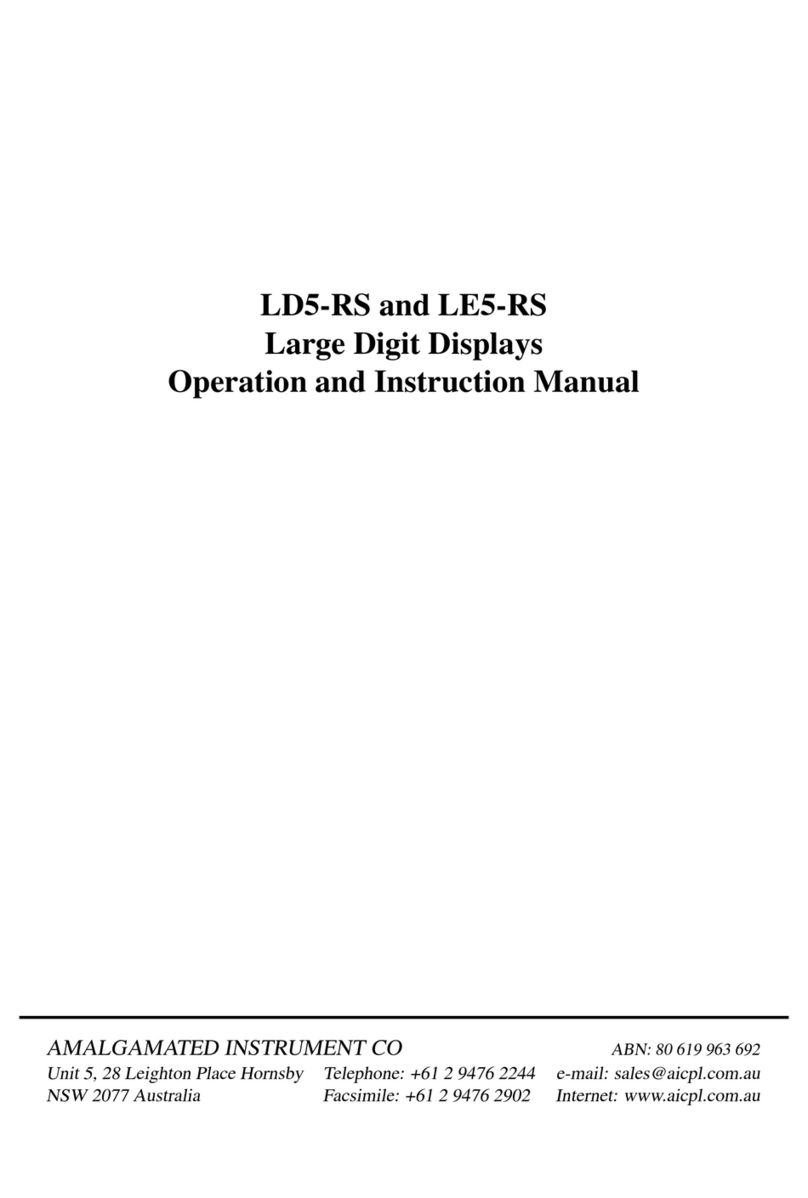
1 Introduction
This manual contains information for the installation and operation of the PM4-TMR timer mon-
itor. The instrument may be set to operate in one of two basic modes namely period (PERd) or
scaled period (S.Prd) modes. The mode of operation is selected at the SEt OPER function.
The two modes of operation are:
•PERd - period of the input pulse display. The period of the input pulse is measured and
may be displayed in various different time display modes e.g. hours.minutes.seconds. Count
up from zero or count down from a preset value modes of operation are provided.
•S.Prd - scaled period display mode. This mode allows the measurement and scaling of
the duration of an input pulse. Since time is being measured the display would typically
be programmed and scaled to read in time (minutes, seconds etc.) or rate (metres/second,
litres/hour etc.). It is equally valid to scale the display to read in any units which may be a
function of time e.g. distance traveled in mm.
Selection of operating mode, calibration and scaling are all accomplished by push button operation.
“On screen” prompts are given for each function to assist in setting up the instrument. Some
changes may require dismantling the instrument to alter PCB links.
Selection of operating mode and scaling are all accomplished by push button operation (see page
19 for details). Display prompts are given for each function to assist in setting up the instrument.
Changes to input sensor type or optional outputs may require dismantling the instrument to alter
PCB links.
When the display is actively timing a decimal point will flash approximately once per second. If
no decimal point is used in the selected display the decimal point of the least significant digit (the
digit on the right of the display) will flash approximately once per second.
An inbuilt relay provides an alarm/control function, optional extra relays (allowing up to 7 in total),
optically isolated analog (single or dual channel), serial or digital (BCD or binary) re-transmission
and isolated excitation voltage may also be optionally provided. The single analog output option
can be set for retransmission or PI rate control. The dual analog output option allows output 1 to
be set for PI or retransmission, the second output can be set for retransmission only.
Unless otherwise specified at the time of order, your PM4 has been factory set to a standard
configuration, see the function table for your selected mode for default settings. Full electrical
isolation between power supply, input voltage and re-transmission output is provided by the PM4,
thereby eliminating grounding and common voltage problems. This isolation feature makes the
PM4 ideal for interfacing to computers, PLCs and other data acquisition devices.
The PM4 series of Panel Mount Monitors are designed for high reliability in industrial applications.
The high brightness LED display provides good visibility even in areas with high ambient light
levels.
PM4TMRMAN-2.1-0 3 of 43
